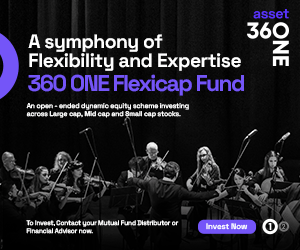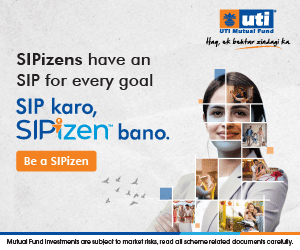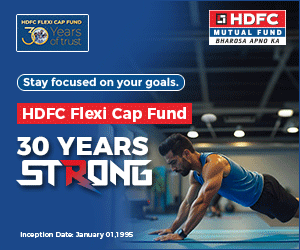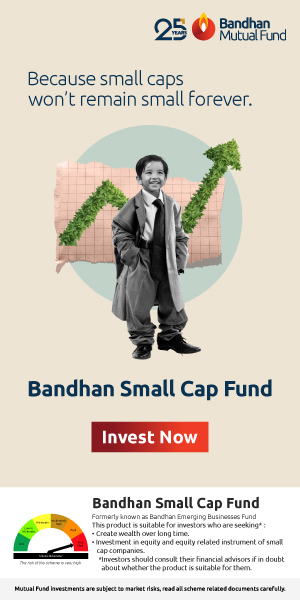How can financial advisors use technology to take their businesses to the next level

In the previous part of this post, Technology is reshaping our world: Financial advisors should embrace technology: Part 1, we discussed how technology is re-shaping the financial services landscape. Michael Porter of Harvard Business School, in 1979, developed a 5 – Force framework to examine the competitive structure of a business. The 5-Force framework is taught in the basic level marketing courses of almost all business schools. These 5 forces are:-
- Threat of New Entrants – referring to new competitors entering the industry
- Intensity of rivalry from competitors – referring to competition from your existing competitors, e.g. other IFAs, national distributors, online distributors etc.
- Threat of substitutes – referring to share of your customer’s wallet going to products that you do not sell
- Power of the suppliers – referring to the product manufacturers, e.g. AMCs, primarily in the form of pricing
- Bargaining power of the customers – referring to demand for additional services or lower pricing by your customers
If you think about these five forces, in relation to your business, a little more deeply, you will realize that technology will intensify each of these five forces. Therefore, there is no doubt that, technology poses some threats to the traditional Independent Financial Advisor (IFA) business model. To what extent, it will impact your business, will play out over time as the industry and technology evolve, but you should at least be aware of it. At the same time, I feel that, technology will also create opportunities for IFAs to take their business to the next level through three competitive benefits:-
- Improved advisor productivity
- Improved customer relationship management
- New channels of customer acquisition
In this post, we will discuss how IFAs can use technology as a competitive advantage. We had touched upon some advantages of using technology, particularly with respect to customer servicing issues, in our previous post, Technology is reshaping our world: Financial advisors should embrace technology: Part 1.
Advisor Productivity
As discussed, in our previous blog post on this topic, financial advisors spend a lot of time in back office and customer services related work. While this work is essential for fulfilment of the customer’s investment needs, it can, to a large extent, be automated. Many AMCs provide the facility of doing online mutual fund transactions, by getting the investor to provide a one- time mandate (OTM). OTM is a one-time mandate registration process that will enable your customers to make convenient, paperless and secured mutual fund transactions. Using the OTM facility, your customer can instruct his or her bank to allow a debit of a certain amount, with a fixed daily upper limit in his or her account, whenever they wish to transact in mutual funds. A senior sales executive of a leading AMC told me a few months back, that he was surprised why more and more advisors are not getting their customers to use the OTM facility. At the same, he told me that, a large number of advisors from a particular state in Western India, have got their customers registered for the OTM facility and the feedback from these advisors have been great. These advisors have observed that, their customers are happy to use the online facility, while advisor has to spend much less time and also money, going the customer’s homes / offices to get the paperwork done.
If you want your customers to do most of their mutual fund transactions using a single platform without having to do multiple OTMs with different fund houses, you can use the Mutual Fund registrars’ online facility. Investors can make payments for their mutual fund purchases through the mobile banking facility of the bank accounts registered in their folios. Some investors may not be comfortable doing online banking transactions, but customer behaviour is changing rapidly. More and more customers are using online banking and online commerce capabilities. Therefore, even if your existing customer base is not totally comfortable with online transactions, it should not prevent you from getting your new customers to use online transactions. It will also be beneficial for you to educate your existing customers on the benefits of using online facilities. Through online self service by the customer, you, as the advisor, can save a lot of time, that you can spend more productively on business development.
Finally, a significant amount of time of many financial advisors is spent on after sales services. These can be of the nature of downloading account statements and emailing to customers, preparing consolidated monthly or quarterly account statements, preparing capital gains tax statements, so on and so forth. Most of these tasks can also be automated, using freely available online resources. Karvy and Cams gives clients their total portfolio view in one place if their email Id is registered in the respective folios. However, Advisors can build their own integrated online platform as well at a reasonable cost which will give their clients overall portfolio view and various other useful reports, on a totally automated basis. Thereby advisors can save a considerable amount of time in after sales services.
Customer Relationship Management
As an Independent Financial Advisor, you may have 50 to 100 customers, if not more. Assuming that you have 100 clients, if you want to ensure regular touch-base with your customers, you will have to schedule 100 meetings every month. This will be over and above the meetings you have with AMCs. Scheduling 100 customer meetings a month means you will have to schedule an average of more than 3 client meetings per day and that includes Sundays also. On top of that, you will receive phone calls from your customers and AMCs regarding customer service issues. It is simply not possible to sustain a schedule like that on an ongoing basis, if you are a one man or one woman army, which most of the financial advisors are.
How do advisors manage time? Most of them follow the famous 80:20 rule. 80% of the business comes from 20% of the customers. So they focus their time and energy on the 20% customer base that gives them the maximum portion of their revenues. However, modern statistical studies have challenged whether the 80:20 rule gives the best result or simply an efficient result. A modern theory of marketing called the theory of “long tail”, challenges the 80:20 rule. The long tail theory refers to an increasing shift in from a focus on a relatively small number of "hits" at the head of the demand curve and towards a huge potential of the tail. In other words, 20% of your customer base may be giving you 80% of your business, but the potential of 80% of your customer base may be huge, much bigger than that of the 20% that you are currently focused on. Let me share the example, of a financial advisor to whom I made a reference, as an example, in the first part of this post, Technology is reshaping our world: Financial advisors should embrace technology: Part 1.
This financial advisor has a decent sized AUM base, but like most other advisors 80% of his revenues are derived from 20% of his customer base. What is the 20% of his customer base? Mostly, it is customers who are in the age group of 55 to 65. This is typically the stage of life, when an investor’s wealth is at its highest level. This advisor naturally devotes most of his time and energy to this set of investors. But he should ask himself, what is the growth potential of his AUM base, other than natural market related growth? Since, the clients accounting for the maximum revenues of this advisor are already at their maximum net worth and investment potential, the AUM growth potential is limited at best and zero to diminishing in many cases. On the other hand, a customer who is in his or her twenties or thirties, even though small from an AUM perspective at this point of time, can grow their investment capacity by 20 to 30% every year. Over a period of 15 – 20 years this potential can be huge. The question that this financial advisor or many others, who are in a similar position, will ask is “how will I service the entire customer base, given the constraints in terms of time and resources”? It is a fair question. You cannot ignore the 20% who gives you maximum revenues, and at the same time you cannot ignore the 80% where the potential is enormous. Fortunately, technology can provide an answer, if you break down the requirements you have for different customer segments, into task level details.
Customer relationship management (CRM) applications can make your sales and customer relationship tasks much simpler and efficient. Finally, CRM applications can enable you to carry out online customer satisfaction pulse surveys. Large service organizations carry out regular pulse surveys, to make their service even more effective. You may think that, you are doing a great job, but the customer may beg to differ with you. Online customer satisfaction surveys are not just more cost efficient compared to doing it over phone or in person, online surveys are often more effective, especially if anonymity is ensured, because a customer may not be comfortable giving a negative feedback on phone or in person, whereas in an anonymous online survey, the customer is likely to be more honest with respect to his experience.
Many CRM applications are contact list maintenance and scheduler tools. It helps you to maintain contact lists of your clients, schedule appointments and send regular communications, both general and specific to a certain set of customers on a regular basis. Though, it seems fairly basic to start with, the customer servicing and experience potential is quite significant. But CRM is more than contact list and calendar. You can also use CRM applications to send out new product / NFO notifications to customers, both via email and text messaging (SMS). You can use CRM to notify customers regarding their mutual fund transactions, including allotment of units, status of redemption requests, upcoming SIP auto-debits, month end portfolio values (even daily if you want) etc, either via email or text messaging or both. You can use CRM to raise problem tickets for customer service issues and notify them when the issue is resolved. You can use CRM tools, to send monthly, quarterly or annual account statements to customers. You can send automated greetings to customers on important events like, their birthdays, wedding anniversaries, Independence day, religious events etc. Unfortunately, the market of CRM applications for financial advisors is not well developed in India, unlike the West. However, if you apply your mind and work with a good technology vendor, then you can easily build your own CRM solution. CRM solutions will not only enable you to provide better customer service, but also engage with a bigger spectrum of your customer base on a more regular basis than you are doing right now. Good CRM solutions improve customer experience, advisor productivity and most importantly, revenue potential.
As a society, we are cost conscious and are careful with expenses. However, as a society, we are also prisoners of own preconceived notions. If you think technology is very expensive, you are wrong. You can build very cost effective technology solutions, provided, you educate yourself about technology. Based on my experience with technology costs, you do not have to spend several lakhs to build an effective CRM tool. You can actually do it at a much lower cost.
In the third and concluding part, we will discuss New Customer Acquisition and how Skepticism about technology will prevent you from achieving your potential. Please stay in touch.
Queries
-
What is the benefit of mutual fund STP
Aug 29, 2019
-
How much to invest to meet target amount of Rs 2 Crores
Aug 26, 2019
-
Can I achieve my financial goals with my current mutual fund investments
Aug 24, 2019
-
Can you tell me return of various indices
Aug 19, 2019
-
What would be the post tax return on different investments
Aug 18, 2019
-
Which Principal Mutual Fund scheme will be suitable for my retirement corpus
Aug 16, 2019
-
What is the minimum holding period for availing NCD interest
Aug 4, 2019
Top Performing Mutual Funds
Recommended Reading
Fund News
-
Zerodha Mutual Fund launches Zerodha Nifty Short Duration G Sec Index Fund
Dec 26, 2025 by Advisorkhoj Team
-
Groww Mutual Fund launches Groww Nifty Chemicals ETF
Dec 26, 2025 by Advisorkhoj Team
-
DSP Mutual Fund launches DSP Nifty Next 50 ETF
Dec 19, 2025 by Advisorkhoj Team
-
DSP Mutual Fund launches DSP Nifty 500 Index Fund
Dec 19, 2025 by Advisorkhoj Team
-
Kotak Mahindra Mutual Fund launches Kotak Nifty Next 50 ETF
Dec 18, 2025 by Advisorkhoj Team














